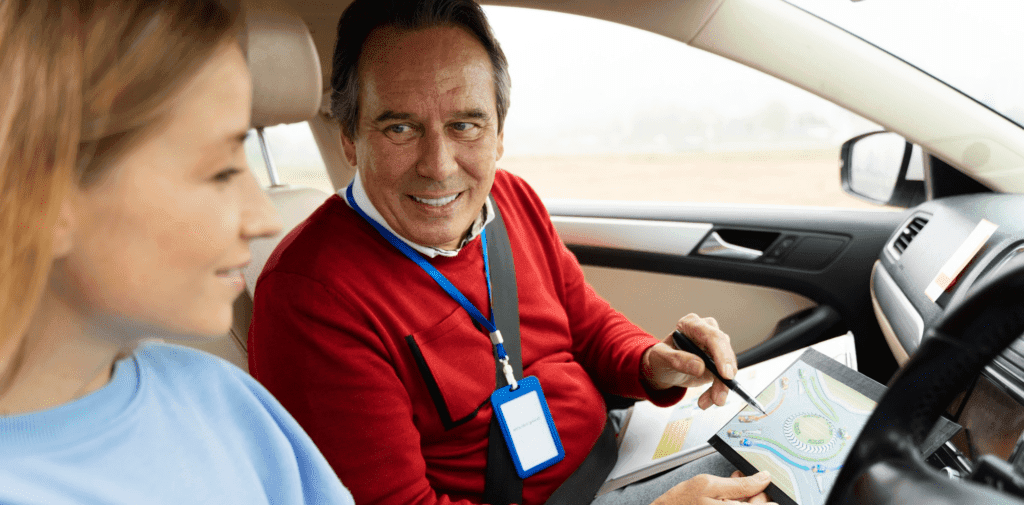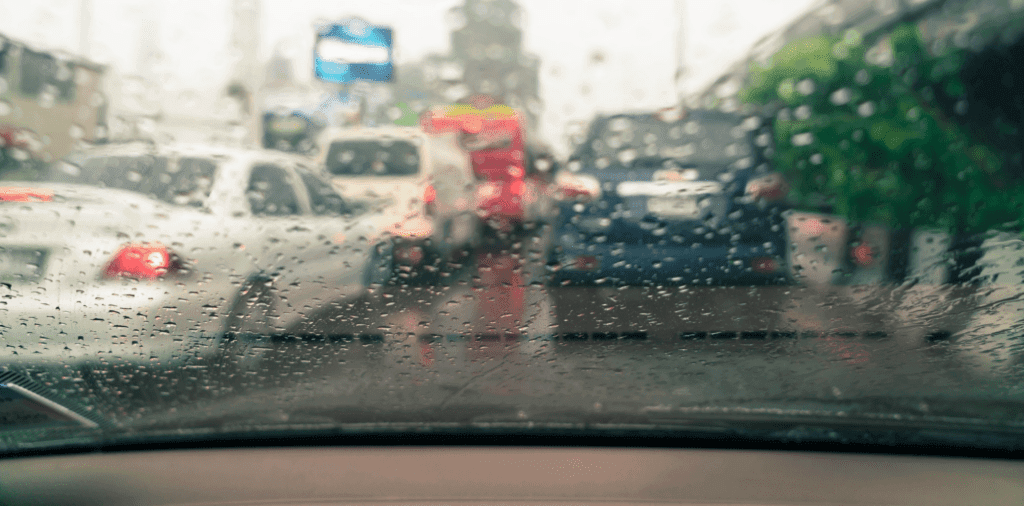
While the primary aim for learner drivers is often to pass their practical test, real-world driving presents a range of challenges not covered in the test.
To navigate these challenges effectively, adopting defensive driving skills is crucial. These skills not only help in preventing accidents but also significantly lower the risk of collisions.
Defensive driving involves a set of techniques aimed at ensuring your safety, as well as that of other road users.
By learning and implementing these techniques, you can contribute to creating a safer driving environment for everyone. Continue reading to discover more about these vital skills.
What is Defensive Driving?
Understanding Defensive Driving
Defensive driving is a collection of skills and techniques that motorists can acquire to protect themselves against hazards on the road.
It involves using observational skills to foresee potential dangers and making preparations to deal with such scenarios ahead of time.
By maintaining awareness of your surroundings, you can reduce the risks to both yourself and your vehicle. Recognising a potential hazard early allows you to take immediate action to circumvent it.

As a driver, it’s impossible to completely anticipate the actions of other road users, and failing to respond to unexpected behaviours, such as sudden swerves or tailgating, can lead to perilous situations.
The Importance of Vigilance
Therefore, it’s crucial to never become complacent while driving and always be ready to respond when needed.
Although the advent of driverless cars may seem distant, it’s essential for drivers to enhance their driving skills to ensure their safety on the road.
While you cannot control the behaviour of other drivers, you have full control over your own actions. Embracing defensive driving techniques empowers you to quickly adapt to the actions of other drivers and, consequently, prevent accidents.
What are the Benefits of Defensive Driving?
Enhancing Safety on the Road
The most significant advantage of defensive driving is its ability to greatly reduce your chances of being involved in an accident.
The more alert you are to the conditions of the road and the behaviour of other drivers, the better positioned you are to steer clear of potentially fatal situations. This awareness acts as the first line of defence against unforeseen dangers.

Reducing Stress and Panic
Another key benefit of defensive driving is its role in stress reduction. By preparing yourself for the worst-case scenarios, you can eliminate the sudden panic that arises from unexpected events on the road.
Familiarity with defensive driving techniques ensures that you are never caught off guard, reinforcing the idea that there is no such thing as being overly prepared when it comes to road safety.
Financial Advantages
Beyond safety, defensive driving has significant financial perks. By avoiding accidents and dangerous situations, you’re also less likely to incur speeding fines or have your licence suspended due to reckless driving.
Moreover, defensive driving is financially prudent as it helps avoid the costs associated with car repairs following an accident.
Furthermore, for younger drivers, particularly those on telematics insurance policies, demonstrating good driving habits can lead to reduced car insurance premiums.
This benefit underscores the dual advantage of defensive driving: enhancing safety while also providing economic benefits.
Who is Defensive Driving Suitable For?
Defensive Driving: A Skill for Every Driver
Defensive driving is deemed essential for drivers of all skill levels and experiences. Whether you’ve recently passed your practical test or have been behind the wheel for decades, the truth is that no one is immune to the risks of the road.
Imperfections in driving skills are a universal trait among motorists, underscoring the importance of defensive driving.
The Universal Benefits
The beauty of defensive driving lies in its universal applicability. It equips you to become the best driver possible, significantly lowering the likelihood of accidents.
Embracing defensive driving techniques not only enhances your safety but also the safety of others on the road.

Making Defensive Driving a Habit
Adopting defensive driving practices into your daily driving routine can transform these techniques into second nature.
The goal is to make defensive driving a habitual part of your driving ethos, ensuring that you’re always operating with the utmost caution and preparedness.
This proactive approach to driving is beneficial for everyone, from the newest drivers to seasoned veterans, highlighting the fact that defensive driving is a critical skill set for all.
Defensive Driving Tips and Techniques
Learning Defensive Driving on Your Own
If you’ve successfully passed your driving test, you might hold some scepticism towards the concept of defensive driving.
However, the good news is that defensive driving skills can be acquired through self-education. There’s no necessity to invest in another course.
By dedicating yourself to remembering and applying these driving tips, you can significantly mitigate potential issues down the line.

Tips for All Drivers
Regardless of whether you’re a novice learner or possess years of driving experience, incorporating our top defensive driving tips can contribute to making the roads safer for everyone.
This inclusive approach ensures that drivers at all levels can benefit from enhanced safety measures and techniques.
Only Trust Yourself
The Reality of Road Safety
It may come across as somewhat melodramatic, but the principle that you can only truly trust yourself on the road is a critical one.
The unpredictability of other drivers means it’s challenging to discern if they are as alert and considerate of road conditions and other vehicles as you.
There’s always the possibility that they could be driving recklessly, or even under the influence of substances.

Control What You Can
What you can manage, however, are your own actions. Ensuring that you always drive in a safe and responsible manner significantly reduces the risks posed by less cautious drivers. This approach empowers you to contribute positively to road safety, making it a safer environment for everyone.
Focus
The Role of Distractions in Accidents
A significant number of accidents on the road are attributed to drivers being distracted by something within their car.
It’s crucial to understand that your vigilance must extend beyond just monitoring the road; it’s equally important to ensure that you’re not diverted by elements such as your car stereo or sat nav.
Even seemingly minor actions, like adjusting the air conditioning settings, can cause you to divert your gaze from the road for a critical few seconds. During this brief lapse, the risk of colliding with another vehicle sharply increases.

The Impact of Distractions
Distractions can also hinder your ability to respond appropriately to emergency vehicles. Being preoccupied can delay your reaction time, potentially obstructing emergency responders or leading to unsafe situations.
Maintaining Attention
To enhance road safety, it’s imperative to avoid distractions and maintain your focus on the driving task. Paying consistent attention to the road and your surroundings not only protects you but also ensures the safety of others.
Space is Important
The Dangers of Tailgating
Tailgating is a leading cause of rear-end collisions, which can result in unwanted repair costs and potential injuries.
The solution to preventing such accidents is remarkably straightforward – ensure that there is adequate space between your vehicle and the one ahead.
A simple rule of thumb is to maintain at least two seconds of lead time. The Highways Agency starkly cautions drivers with the phrase, “only a fool breaks the two-second-rule“.
This guideline becomes even more critical under adverse weather conditions, where increased stopping distances are necessary.

Managing Space Effectively
If you find another driver following you too closely, it’s wise to create additional space for your safety. One strategy is to increase your own following distance, giving you more room to manoeuvre if the car in front of you suddenly stops.
Alternatively, if it’s safe to do so, change lanes and allow the tailgater to pass. This not only protects you but also helps in maintaining smooth traffic flow and reducing the likelihood of accidents.
Adjust for the Weather
Adapting Your Driving to Weather Conditions
Changes in weather necessitate adjustments in road behaviour. For instance, during heavy rain, roads become slippery, significantly affecting your vehicle’s braking times. In such conditions, it’s crucial to reduce your speed and increase the distance between your car and others.

Enhancing Visibility
When visibility is compromised — whether by fog, snow, or low light — it’s vital to turn on your headlights. Use high beams judiciously, only in areas with sparse traffic, to avoid disorienting oncoming drivers.
Acknowledging and acting on advice for driving in adverse weather conditions is imperative. Such conditions invariably affect your driving, often in ways you might not anticipate.
Slow and Steady
The Importance of Maintaining Speed
Speed is a critical factor when it comes to safe driving. As you’re likely aware, and as we’ve discussed in relation to minimum speed limits, sudden changes in speed can often lead to accidents and collisions.
It’s always advisable to keep your speed at a steady pace. This approach ensures that you don’t make any unexpected lane changes or come to abrupt stops.

Watching Out for Others
This advice isn’t just for you; it’s also crucial to be vigilant about other drivers who might not be as mindful of their driving habits. However, this doesn’t mean you should drive too slowly if the general flow of traffic is moving faster.
It’s important to observe the speeds of other vehicles around you and adjust your speed accordingly to maintain safety and flow.
Consequences of Speeding
It’s worth remembering that if you’re caught speeding, you’ll face penalties. These can include a fine, points on your licence, or the requirement to attend a speed awareness course. These measures are in place to remind drivers of the importance of adhering to speed limits and maintaining safe driving practices.
Don’t Lose Your Cool
Keep Calm in Traffic
It’s remarkably easy to let your temper flare while driving – road rage is, regrettably, a real concern, not just an urban legend.
Whether you’ve been trapped in traffic for what feels like an eternity or you’ve just been cut off by another vehicle, it’s crucial to not let your emotions take control.

Let It Go
The key is to stay calm and move on. Reacting angrily, such as honking at other drivers or attempting to outmanoeuvre them, won’t help the situation. Remember, maintaining your composure is always the best approach.
Make Yourself Visible
Ensuring you are visible to other road users is crucial in preventing accidents. Visibility can be particularly challenging around larger vehicles such as trucks, which have significant blind spots. It’s essential to operate on the assumption that these drivers might not be able to see you.
Enhancing Visibility on the Road
To enhance your visibility, always use your turn signals, headlights, and brake lights to communicate your intentions clearly to other drivers.
These signals are vital in making sure others are aware of your presence and movements, especially in situations where you might be in someone’s blind spot.

Regular Vehicle Maintenance
Regular checks on your vehicle play a significant role in maintaining its visibility to others. After learning the show me, tell me questions for your practical test, you should feel confident in performing routine maintenance checks on your car.
Ensuring everything is working correctly not only helps with visibility but also contributes to overall road safety.
Look Ahead
Broaden Your View
Safe driving extends beyond merely focusing on the vehicle directly in front of you. It’s crucial to scan the entire road, keeping vigilant for any road works, pedestrian crossings, or patches of slow traffic.

Anticipate and React
Through keen observation of your surroundings, you’re better positioned to anticipate problems before they arise, allowing for timely adjustments to your driving to circumvent potential issues.
Additionally, it’s beneficial to familiarise yourself with the hazards associated with various types of roads, enhancing your preparedness for diverse driving conditions.
Frequently asked questions
Defensive driving is a set of skills and practices that help drivers anticipate and respond safely to potential hazards on the road.
It focuses on proactive measures to avoid accidents and ensure safety.
Defensive driving is crucial because it reduces the risk of accidents, saves lives, and can lower insurance premiums.
It promotes safer driving habits and enhances road safety for everyone.
Use the two-second rule. Ensure there are at least two seconds between you and the car in front. Increase this to four seconds in poor weather conditions.
Stay calm and avoid aggressive behaviour. Gradually slow down to encourage the tailgater to pass or, if necessary, safely pull over to let them go by.
- Constantly scan your surroundings
- check your mirrors every few seconds
- Be aware of blind spots
Look further down the road to anticipate potential hazards.
Stay calm, do not engage with aggressive drivers, and avoid making eye contact.
If necessary, pull over to a safe location and let the aggressive driver pass.
Accelerate on the slip road to match the speed of the motorway traffic.
Check your mirrors and blind spot, indicate, and merge when it is safe to do so.
- Reduce your speed
- Increase your following distance
- Use dipped headlights
- Avoid sudden manoeuvres
Ensure your vehicle is well-maintained and tyres are in good condition.
- Keep your focus on the road
- Avoid using your phone
- Set your navigation and music before you start driving
Ensure passengers understand the importance of minimising distractions.
Move over to the left if it is safe to do so, and allow the emergency vehicle to pass. Do not panic or make sudden movements.
Be vigilant for pedestrians, cyclists, and parked cars. Observe speed limits, be prepared to stop suddenly, and avoid aggressive driving.
- Yield to traffic on your right
- Use indicators to signal your intentions
- Choose the correct lane based on your exit
Always be aware of cyclists and pedestrians.
Adjust your mirrors correctly and perform shoulder checks before changing lanes or merging. Consider using blind spot mirrors or sensors if your vehicle is equipped with them.
- Maintain a safe following distance
- Stay alert
- Anticipate other drivers’ actions
- Avoid distractions
- Always have an escape route planned
- Take regular breaks
- Stay hydrated
- Avoid heavy meals before driving
Listen to calming music and ensure your seat is adjusted for comfort. Plan your route in advance to reduce stress.



